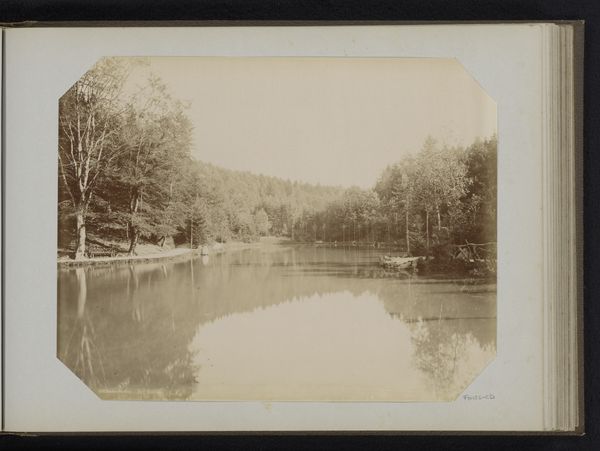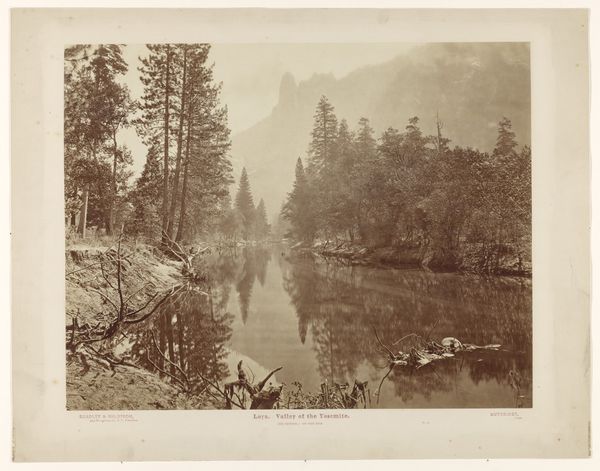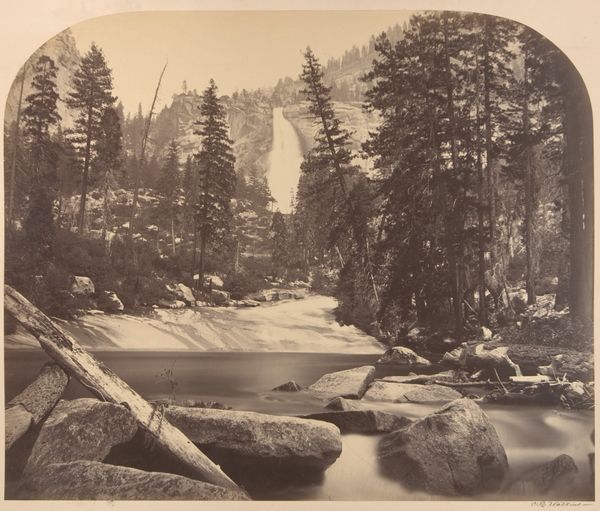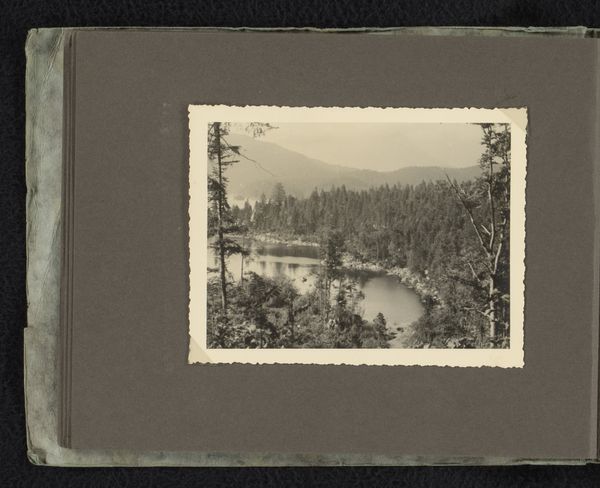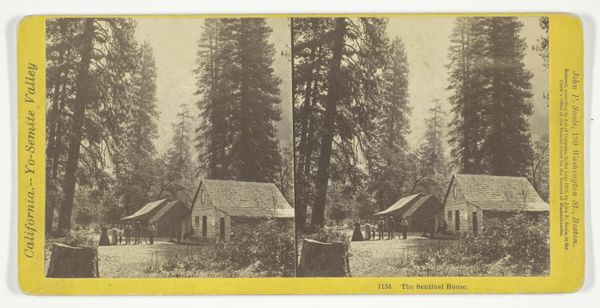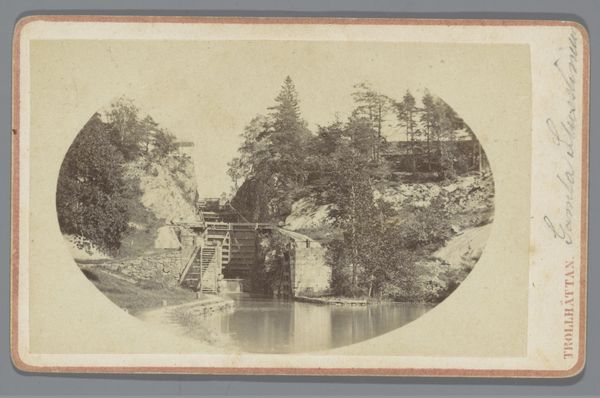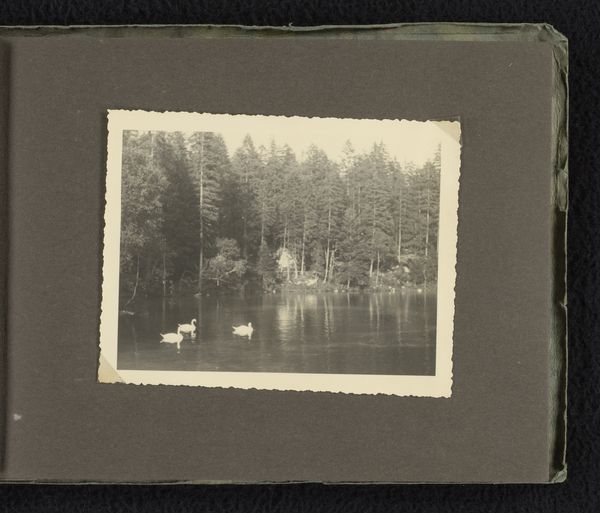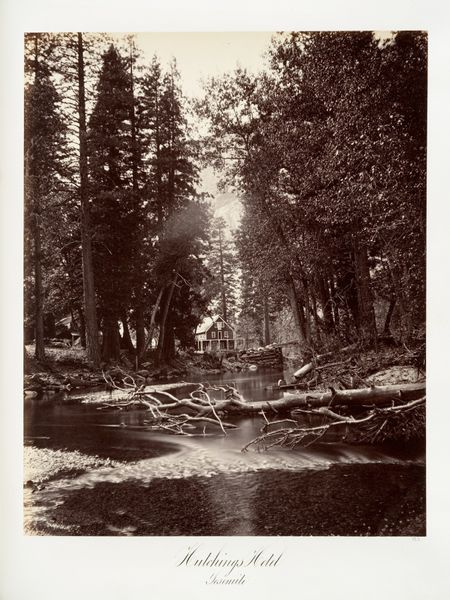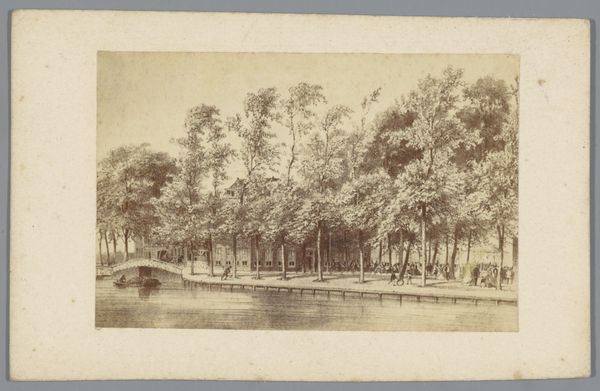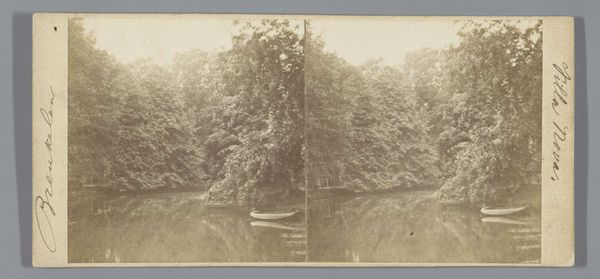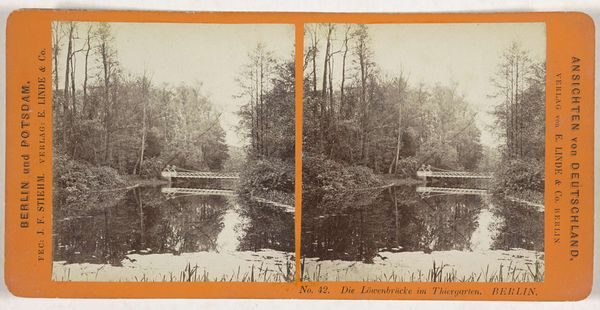
photography, albumen-print
#
landscape
#
river
#
photography
#
coloured pencil
#
hudson-river-school
#
albumen-print
Dimensions: height 82 mm, width 172 mm
Copyright: Rijks Museum: Open Domain
Curator: This albumen print captures a serene scene: "Ten People on a Bridge Over the Merced River in California," dating roughly from 1857 to 1862. Editor: My immediate reaction is one of stillness. The subdued tonality, almost sepia, gives it a timeless, quiet quality. There's a definite emphasis on the horizontal—the bridge, the river’s surface—that adds to that sense of calm. Curator: Indeed. Let’s consider the formal elements. The composition is quite balanced, almost symmetrical, lending itself to a somewhat structured view. The tonal range is subtle, with delicate gradations. And while attributed to an anonymous artist, it’s clearly within the aesthetic of the Hudson River School. Editor: Exactly! It reflects the American interest in portraying landscapes, a sort of visual manifest destiny in showing these expansive terrains and the growing number of settlers. Look how the human figures, posed so subtly on the bridge, appear as observers, dwarfed by the scale of nature. They embody that Romantic era sensibility. Curator: Precisely. This landscape photography, during that time, was also about promoting California and the American West. These views fostered the development of railroads, increased tourism, and a sense of progress and dominance. The photograph is less an objective document and more a tool of power. Editor: But look closer; consider how it shapes a picturesque vista while perhaps masking other realities: The impact of settlers on native populations and ecosystems, which often goes unnoticed in these images celebrating American growth. It presents a specific version of history, right? Curator: Undeniably so. The seemingly innocent depiction is laden with colonial context and selective vision. And on a purely aesthetic level, even the decision to stage and meticulously balance the scene shows an artificial and constructed framing, making it more than merely representational. Editor: Right. It compels me to consider the untold stories. The photo speaks of expansion, but who really profited and who was silenced? Art exists inside—and often as part of—socio-political circumstances. Curator: I concur. Examining its formal components and engaging it socio-historically enhances one’s experience, ultimately giving an aesthetic dimension that reflects its place in time.
Comments
No comments
Be the first to comment and join the conversation on the ultimate creative platform.
